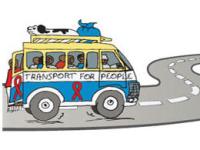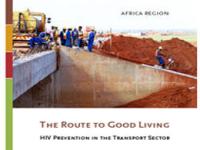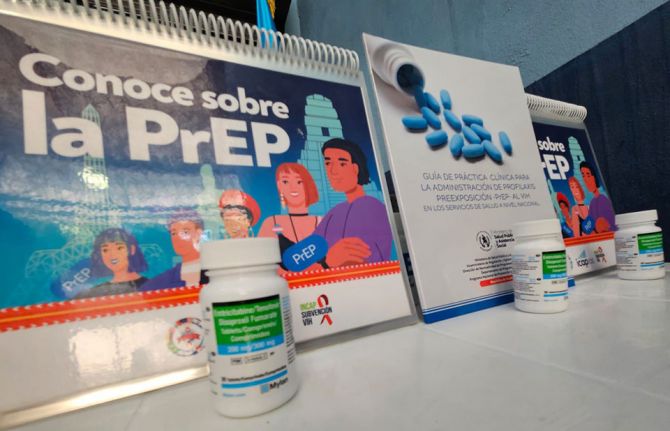
Feature Story
The route to good living: World Bank guide to HIV prevention in Africa’s transport sector
14 July 2009
14 July 2009 14 July 2009 Credit: The World Bank
Credit: The World BankTransport corridors in sub-Saharan Africa, as elsewhere, enable movement of people and goods, increasing economic activity and spreading wealth. But they also facilitate the spread of HIV. In response, the Africa Transport Sector of the World Bank has published a practical new booklet on how to implement HIV prevention activities as part of road construction projects.
The booklet, The route to good living: An overview of roles and responsibilities for HIV prevention strategies in transport sector projects, shows just why this matters. Numerous studies find relatively high HIV prevalence in this sector, especially among long-distance truck drivers. Several have shown that truckers in Kenya, Rwanda and Uganda were more than twice as likely to be living with HIV as the general population.
Many transport workers spend weeks or months away from their families, and often have multiple sexual partners, which can facilitate the spread of HIV. In Nigeria, for example, one study documented each driver having more than six sexual partners at various stops along his route. This means that people living in and around major transport hubs also have increased vulnerability. In Kenya, along the Trans-Africa Highway, high risk behaviour has been reported among boys and girls visiting truck stops and incidence of sexually transmitted infections was documented in 50 percent of the girls and 30 percent of the boys.
 Credit: The World Bank
Credit: The World BankThe route to good living highlights practical steps that can be taken to prevent new infections among transport workers and roadside communities, with special emphasis on road construction works. It summarizes ‘do and don’ts’ for transport ministries, World Bank teams, contractors, consultants, country project units, donors and NGOs when designing and implementing such projects. An overview of the roles and responsibilities of each set of actors within the project cycle is provided: from identification to preparation to implementation and, finally, completion. An HIV prevention strategy should be not an afterthought but an integral part of the undertaking.
The booklet is the latest addition to the information and tools available on the World Bank Africa Transport Sector's AIDS web site.
 Promoting HIV prevention in the transport sector is a key component of the overall AIDS response
Promoting HIV prevention in the transport sector is a key component of the overall AIDS response Credit: The World Bank
It is the result of the sub-Saharan Africa Transport Policy Programme (SSATP) encouraging discussions and collaboration among a range of partners, including the Bank, to provide concrete support in dealing with HIV. The SSATP, a unique partnership of 35 countries, eight regional economic communities, three African institutions (including the African Union/New Partnership for Africa's Development) and international partners recognizes the importance of the transport sector in achieving its goals of reducing poverty and promoting economic growth and regional integration.
In order for the transport sector to fulfill its pivotal role, the potentially devastating effects of the AIDS epidemic must be effectively challenged. The route to good living provides a concrete guide to help achieve this goal
The route to good living: World Bank guide to HIV
Cosponsors:
World Bank’s AIDS work in Africa
Feature stories:
The AIDS response: Relationship to development in Africa (22 September 2008)
World Bank lays out new AIDS strategy for 2007-2011 (14 may 2008)
Tools:
More on the Sub-Saharan Africa Transport Policy Programme (SSATP)
Publications:
The route to good living: An overview of roles and responsibilities for HIV prevention strategies in transport sector projects (pdf, 716 Kb.)



